How to Create Google Chrome Incognito Mode Shortcut
Almost every Google Chrome user is familiar with Incognito mode, that allows opening a special window that doesn't save your browsing history and personal data. You can create a special shortcut to open a new Incognito window directly with one click. Here's how.
Advertisеment
Incognito in Google Chrome is a window that implements the private browsing feature. While it doesn't save things like your browsing history, cookies, site and forms data, it allows you accessing your profile, bookmarks, etc. Actually, cookies remain saved during your Incognito session, but will be deleted once you exit Incognito mode.
It is also important to note that if you have an Incognito window open and then you open another one, Chrome will continue using your private browsing session in that new window. To exit and terminate Incognito mode (e.g. to start a new Incognito browsing session), you need to close all Incognito windows that you have currently open.
Google Chrome allows you to create a shortcut that will open a new Incognito window directly with one click. Here's how it can be done.
Update: Google has introduced a native feature for the same. Check out
Chrome now allows creating Incognito Mode shortcut with one click
Note: I will use the %ProgramFiles(x86)% and %ProgramFiles% environment variables for the shortcut target.
To Create Google Chrome Incognito Mode Shortcut,
- Right click the empty space on your Desktop. Select New - Shortcut from the context menu (see the screenshot).
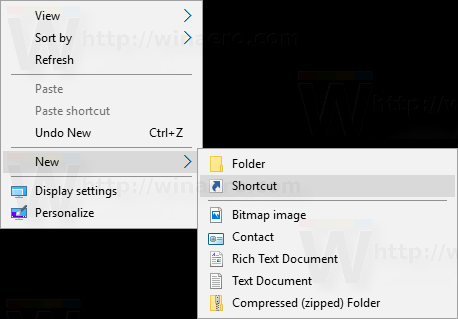
- In the shortcut target box, type the path to the Chrome.exe file followed by the
-icognitoargument. - For a 32-bit Windows version, the command line looks as follows:
"%ProgramFiles%\Google\Chrome\Application\chrome.exe" -icognito. - For 64-bit Windows versions, the shortcut target usually looks as follows:
"%ProgramFiles(x86)%\Google\Chrome\Application\chrome.exe" -incognito.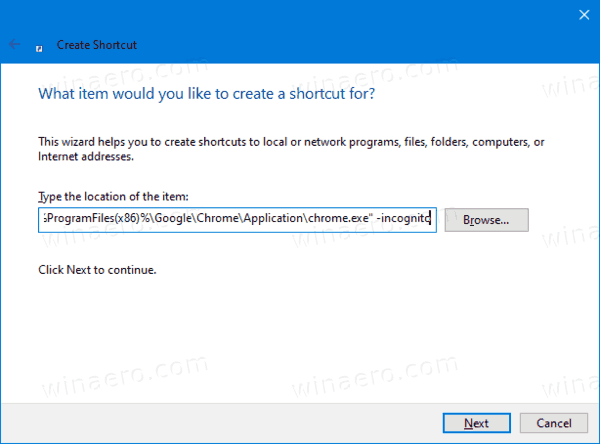
- Name your shortcut as Google Chrome Incognito and change its icon if needed.
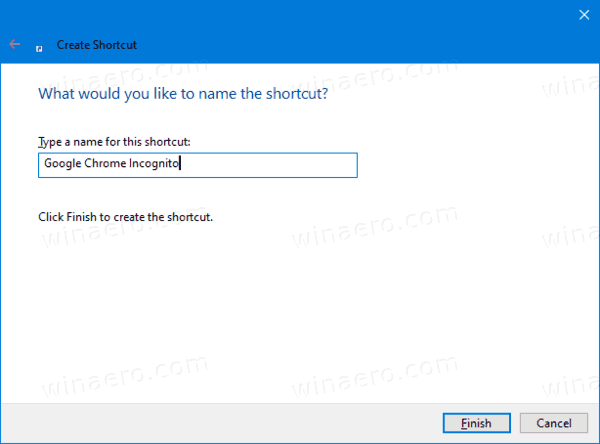
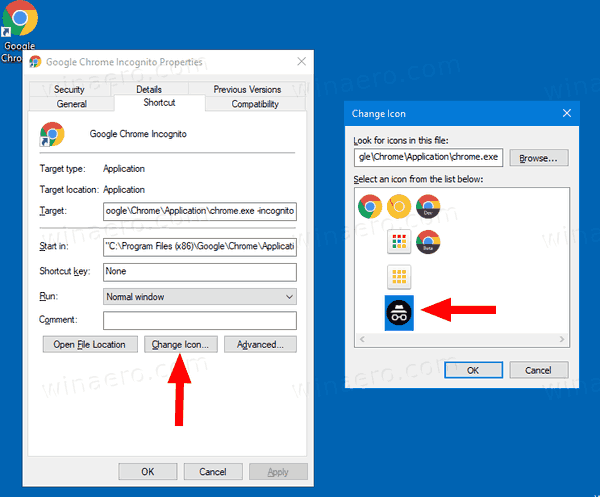
You are done!
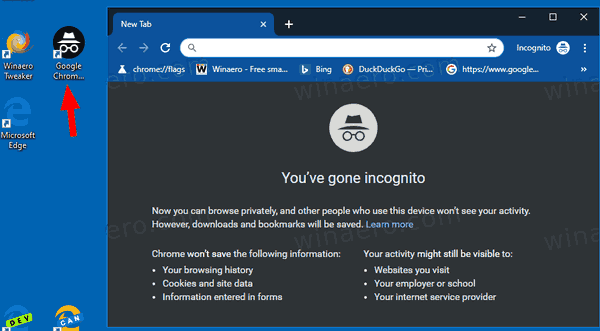
Now, you can move this shortcut to any convenient location, pin it to taskbar or to Start, add to All apps or add to Quick Launch (see how to enable Quick Launch). You can also assign a global hotkey to your shortcut.
Also, here are a couple of tips you might find useful.
Make the shortcut open a URL in Incognito mode
You might want to open a specific web site always in Incognito mode. In this case, you can add its address (URL) to the shortcut target. For instance, you can create a shortcut with the following target:
"%ProgramFiles%\Google\Chrome\Application\chrome.exe" -icognito https://winaero.com
or
"%ProgramFiles(x86)%\Google\Chrome\Application\chrome.exe" -icognito https://winaero.com
Then every time you click on the shortcut you will have Winaero opened in an Incognito window.
Open a new Incognito window
By default, Chrome launched with the -icognito switch opens an Incognito window only if one was not already open. If you want, you can make it open an extra incognito window by adding one more command line argument, -new-window.
The shortcut target will look as follows:
"%ProgramFiles%\Google\Chrome\Application\chrome.exe" -icognito -new-window
or
"%ProgramFiles(x86)%\Google\Chrome\Application\chrome.exe" -icognito -new-window
Similarly, the targets with a web site open in a new/extra Incognito window.
"%ProgramFiles%\Google\Chrome\Application\chrome.exe" -icognito -new-window https://winaero.com
or
"%ProgramFiles(x86)%\Google\Chrome\Application\chrome.exe" -icognito -new-window https://winaero.com
That's it!
Articles of interest:
- Force Enable Guest Mode in Google Chrome
- Start Google Chrome Always in Guest Mode
- Enable Color and Theme for New Tab Page in Google Chrome
- Enable Global Media Controls in Google Chrome
- Enable Dark Mode for Any Site In Google Chrome
- Enable Volume Control and Media Key Handling in Google Chrome
- Enable Reader Mode Distill page in Google Chrome
- Remove Individual Autocomplete Suggestions in Google Chrome
- Turn On or Off Query in Omnibox in Google Chrome
- Change New Tab Button Position in Google Chrome
- Disable New Rounded UI in Chrome 69
- Enable Native Titlebar in Google Chrome in Windows 10
- Enable Picture-in-Picture mode in Google Chrome
- Enable Material Design Refresh in Google Chrome
- Enable Emoji Picker in Google Chrome 68 and above
- Enable Lazy Loading in Google Chrome
- Permanently Mute Site in Google Chrome
- Customize New Tab Page in Google Chrome
- Disable Not Secure Badge for HTTP Web Sites in Google Chrome
- Make Google Chrome Show HTTP and WWW parts of URL
Support us
Winaero greatly relies on your support. You can help the site keep bringing you interesting and useful content and software by using these options:
